Wow did I get a shock this morning, when I realized even though I set this post up to automatically post at 8:30 monday morning ( As I am still dealing with nasty meds that make me want to sleep). It never posted but wednesdays post did so here is Monday’s Post.
When I first saw this sheep it reminded me much of wensleydale or masham. Their long lustrous locks enamored me. Teeswater is a native of the Tees River area which runs from Cross Fell to the North Sea. They were a pretty isolated breed. However their numbers fell in early in the 20th century.
The Teeswater Sheepbreeders Association was created in 1949 to preserve the breed as Teeswater is usally used for creating Mashams and Mules. While wensleydale is considered to have a heavier fleece than Teeswater , however teeswater is said to be better for meat.
The breed standard is pretty straightforward. Long lustrous locks that are separated and don’t felt or clump together. There is no kemp or dark fibers either. They are a polled breed and have broad muzzles. The colour of the head varies from off-white to grey-blue. They can have dark brown or black markings around the nose, ears and eyes. Teeswater sheep always have a characteristic forelock of wool falling over the face( reminds me of the wiley coyote and the sheep dog cartoons).
There is an American Teeswater as well. However they are not included in the total amount of the breed because they have been improved and would not be considered the same as the original breed. For wool purposes though they seem pretty much the same.
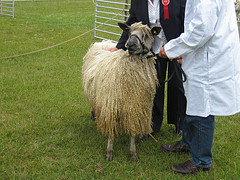
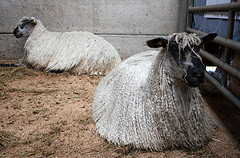
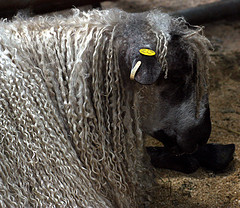
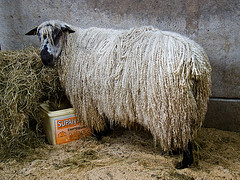
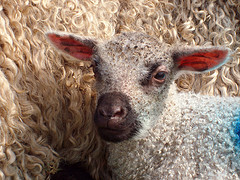










What lovely fleeces they have! I like youe comment about the forelock hanging down 🙂
It really is quite lovely fiber to work with. I can’t wait to spin it and knit it.
Curious why you say the American Teeswater has been “improved”.
As an American Teeswater breeder I am trying to duplicate the breed in US. They are so incredible how could they possibly improve??
The reason I used the word “improved” is because American Teeswaters are being developed thru a system of upbreeding using imported semen to crossbreed to ewes of other specific longwool breeds. These offspring are then bred again to with the teeswater semen and the cycle continues to the 5th generation which is then considered 96% teeswater and is classified as a purebred american teeswater. The animals are not included in the Rare Breeds Survival Trust.
Its debatable if that is an improvement, which to my mind infers “better”. Not the case!